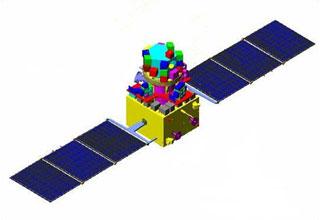Choppers
SENIOR MEMBER

- Joined
- Jun 6, 2009
- Messages
- 1,300
- Reaction score
- 0
- Country
- Location
More Money for ISRO 

SeaSpace Signs Agreement with Antrix Corporation Ltd to be Provider of Oceansat-2 OCM
SeaSpace Corporation is pleased to announce that it has signed an agreement with Antrix Corporation Limited, the marketing arm of the Indian Space Research Organization (ISRO), to be the provider of OCM-2 Ground Station and Processing Systems outside of India. OCM-2 is the Ocean Color Monitor instrument on the Indian satellite, Oceansat-2. An initial agreement was reached on August 3, 2010, at the SeaSpace International Remote Sensing Conference in Kahuku, Hawaii, between Dr. Murthy Remilla of Antrix and Hyong Ossi, the President of SeaSpace, with the final license agreement being signed on November 5, 2010.
SeaSpace Corporation has been the provider of OCM data from Oceansat-1 since 2002. With this new agreement, SeaSpace looks forward to continuing the partnership between itself and India. OCM data has been an asset to SeaSpace customers for years, and with this new partnership, I am happy to be able to offer it for years to come, says Hyong Ossi.
Customers interested in receiving or processing Oceansat-2 OCM data, can contact the SeaSpace sales department at sales@seaspace.com or (858) 746-1100.
Last edited:








 pata chalega usko to ulta latka ke maaregi
pata chalega usko to ulta latka ke maaregi 


